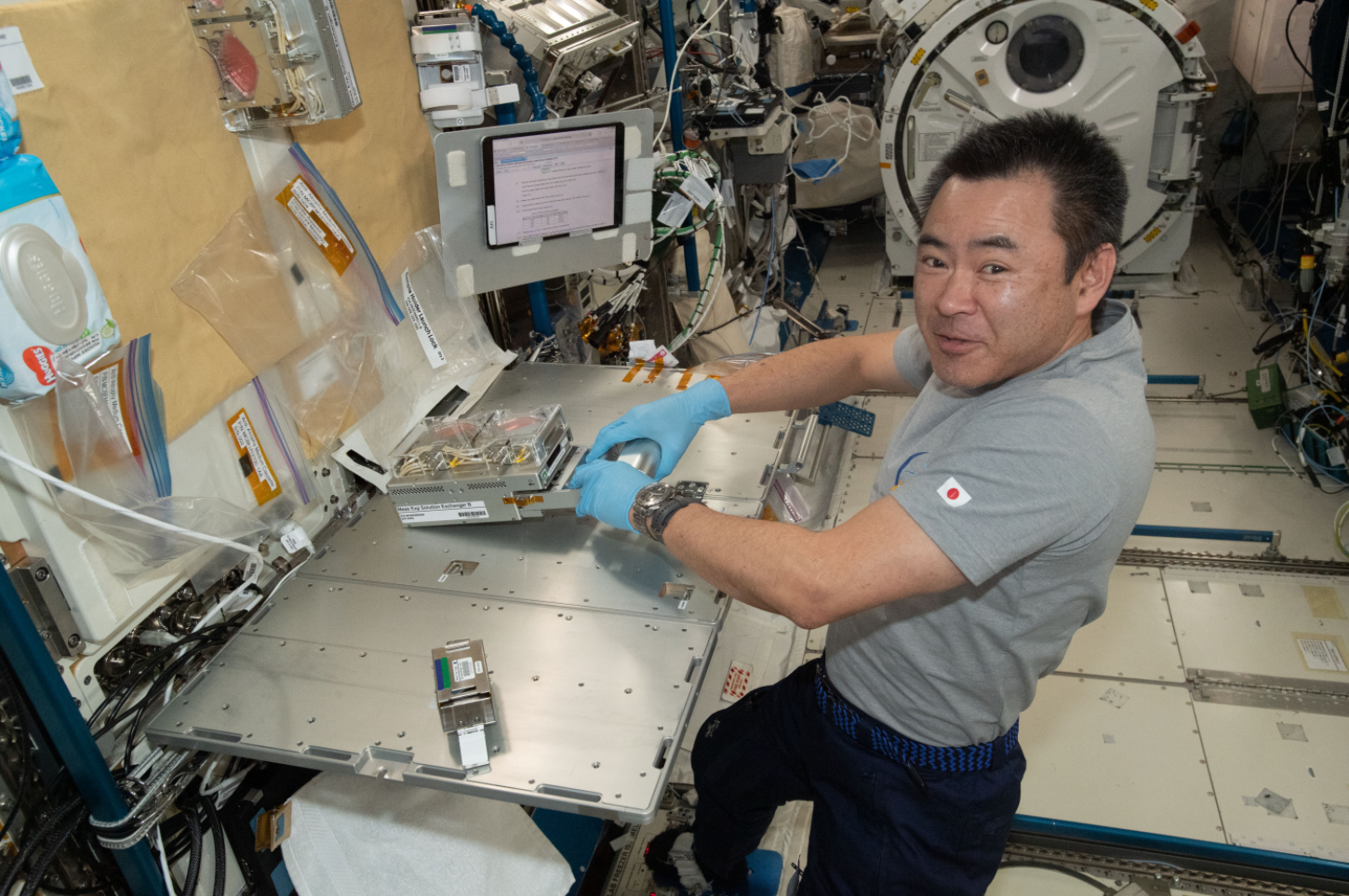Station Science Top News: Sept. 30, 2021
On Sept. 30, the 23rd SpaceX commercial resupply services mission undocked from the space station, returning samples from scientific experiments aboard the orbiting laboratory. Back on Earth, scientists anticipate quick access to their experiments for additional observations and analyses.
Here are details on some of the experiment samples riding the Dragon back to Earth, and what we hope to learn:
The Ring Sheared Drop (RSD) experiment developed a device that uses surface tension rather than a solid container to hold liquids — something possible only in microgravity. The study has confirmed that the surface tension concept of RSD works for containing protein solutions in space. Researchers used the device to study protein aggregates called amyloid fibrils, which may be related to several diseases. Studying the samples returning aboard Dragon could improve our understanding of how amyloid fibrils form and are transported and, in turn, help us better understand diseases like Alzheimer’s, Parkinson’s, and type 2 diabetes.
***
The Japan Aerospace Exploration Agency (JAXA) investigation Anti-Atrophy tests the ability of biomaterials to inhibit muscle atrophy in microgravity. Cells cultured on the space station with and without biomaterials were fixed and stowed in the Minus Eighty Laboratory Freezer for ISS, or MELFI, for return to Earth. Researchers plan to compare the two types of cultures to verify the effectiveness of the biomaterials. Results may lead to the production of pharmaceuticals to prevent muscle atrophy, not only for astronauts in space, but also for the elderly on Earth.

JAXA astronaut Akihiko Hoshide services cell samples for the Atrophy (Anti-Atrophy) investigation inside the space station's Kibo laboratory module. Credits: NASA
***
Some pharmaceuticals used to maintain astronaut health do not work as well in space, an effect potentially linked to changes in levels of the liver enzymes that metabolize most drugs. Genes in Space-8, a student-designed experiment, tests a technology for monitoring the expression of genes that control these critical enzymes. This test could lead to a better understanding of spaceflight-induced changes in liver gene expression and may support development of new therapies that can account for the body’s adaptations to spaceflight.
Learn more in the recent NASA.gov feature story.







